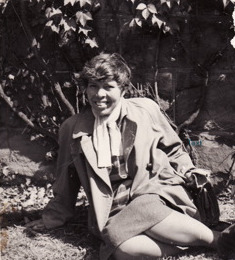Through the Lens of Canadian Culture and Society
The chief purpose of analyzing these pieces was to decipher the characteristics and staples of obituaries as a genre, and how this is directly linked to historical studies. Since genre is a direct reflection of the culture it stems from, it can be said that these obits serve as a physical manifestation of Canadian Culture at the time - but what do they tell us?
These obituaries indicate a shift in the country’s attitude towards women in roles that were initially designed for men. While they may not be consistently celebratory, or at times vague, their existence is a marker of change; they demonstrate that the society of the day deemed her “worthy” and “influential” enough for public notice. Beyond this, it also represents their respect for the relationship Robinson had with Canadian politics and people, regardless of the way her opinions aligned. The inclusion of her photo, which was uncommon for women at the time, only further backs this finding. (10)
The obituaries can also be suggestive of the way geographical location plays into the way people are remembered. As was seen in the comparison of newspaper sizes, the smaller or rural papers remain very distanced in the details and information they gave, while the newspapers from Toronto - where Robinson lived and worked - chronicle a detailed story of her. This demonstrates a potential for geographical bias, and the ways location may take precedence to achievements or accolades.
Eager to only reference the good, it can be observed that obituaries leave out much of the controversy that followed Robinson and her opinions. (11) Since her negatives are omitted, it calls into question the “more-than-intentional” use of obituaries. As they are structured to direct our attention to the positives, the negative connotations or controversies that follow one during life can be “lost” in death. (12) This is common for the deaths of public figures, and opens the door to another sub-genre of obituaries. For more information regarding this discussion, take a look at Aleem and Ryan's work.
Public figures are written about in a way that differs from the average citizen, as is exemplified in Robinson’s dedications. Not following the “relatability” that is standard to the style, these pieces strived to set the person aside from the broader population. To do this, authors wrote heavily about the achievements of Robinson, while leaving out details and information that would make her more relatable. Things like nicknames, hobbies, and other personality traits were all left out, elevating the works about her to public memoriam status.
